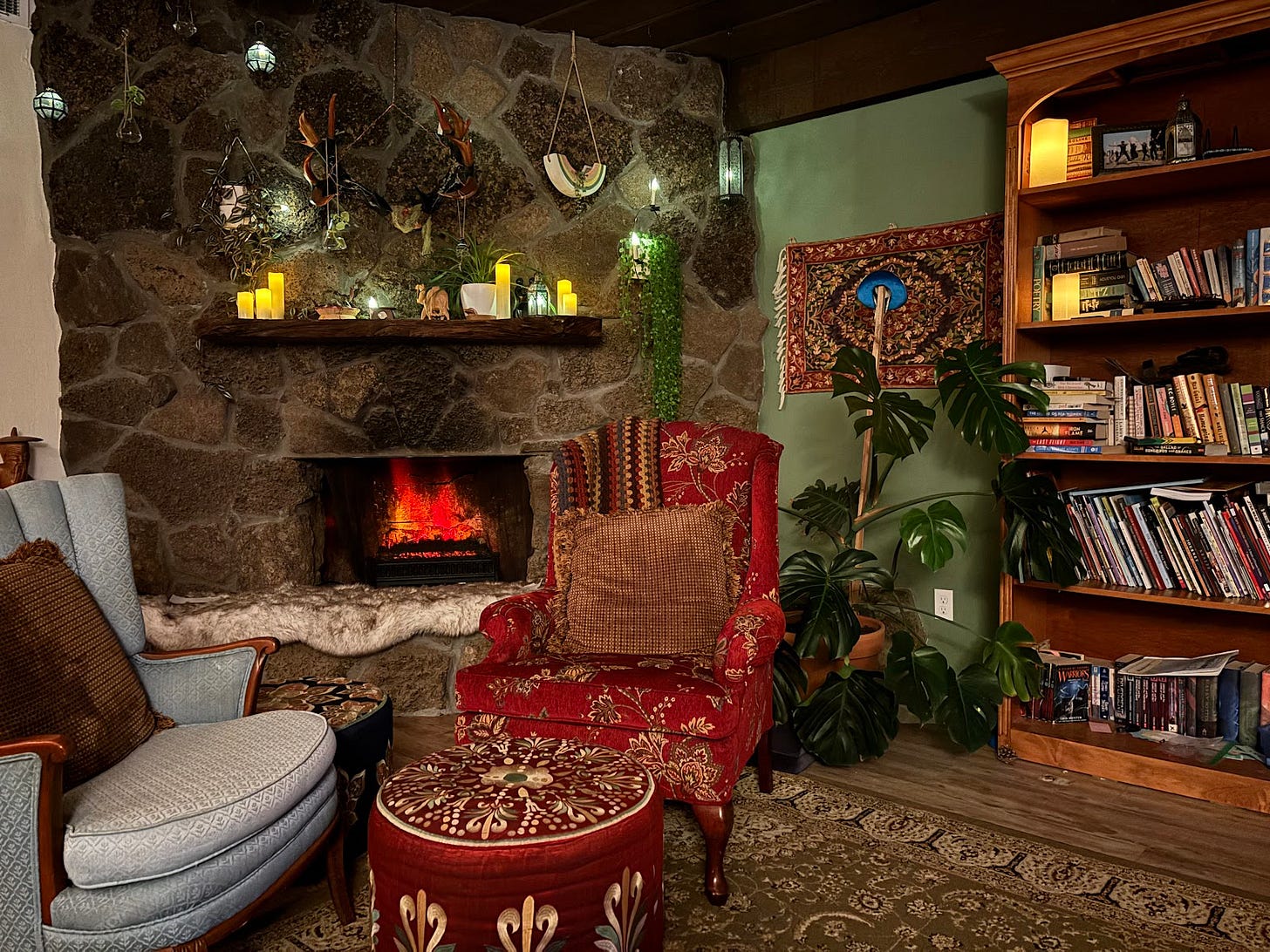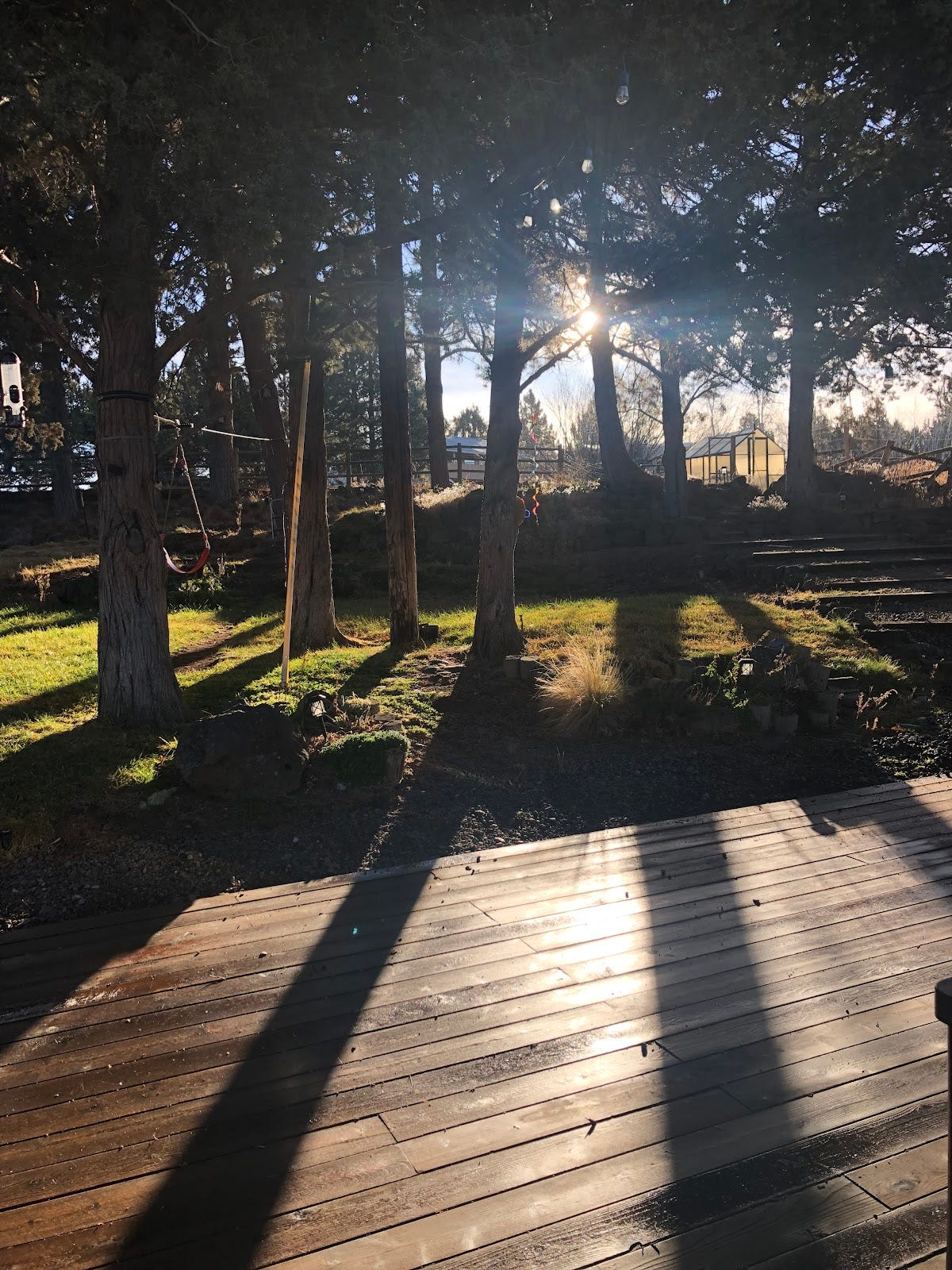When Beth and I were in our Master’s teaching program—planning and dreaming for our classrooms one day—we never imagined just how much school gun violence would increase throughout the next twenty years. Getting a message from Beth this fall, right after the incident she shares about below, sent waves of sickness through me. We are grateful for Beth’s willingness to share and process her experience here and we’re so thankful she has the community and resources to help her work through the emotions. —Molly
As I write this piece, I am ensconced in the darkness of winter. Winter Solstice and Advent just passed. Nights are long and the cold seeps at the edges of the doors. Frost curls on the window; thick clouds cover the skies. The frozen ground lies still beneath patchy snow, unyielding as stone. I tried to dig last week, desperate to have my hands in the soil, but the frozen earth rebuked me.
Officially, we are in the liturgical season of Christmastide, the 12 days of Christmas. A part of me has been present for the celebrations, cozy and delightful, but I find myself gravitating towards appreciating the darkness. I’ve slept more (or tried to). I’ve sat in my dimly lit living room and appreciated the quiet. I silenced myself and shut off the noise from without.

In October, a student brought a loaded gun and a list of students he had planned to attack to the middle school where I teach. He ended up turning in the weapon to a trusted adult and no one was harmed…physically. The next few weeks were a slow crash, a dimming as the days shortened. I lay awake at night imagining what I would do if (when?) a student pulls a weapon in my classroom.
What will I say to them? What could calm them? What do I throw? How do I stop a student from bleeding, with the dirty rag I use to clean desks, or use my own clothing? How do I prepare my own children? Will my faith comfort me? What about my own child, who attends the same school, if she sees her classmates gunned down? How do I face the fact that I could have stood over her bleeding body? Or her, mine?
There are no answers to these questions. I tend to feel safe when I can control my emotions, pressure hissing out of a tiny crack, easily mended with humor, friends and therapy. Throughout the fall, I slid into darkness. I let myself weep, which is new for me. I gave free reign to a depth of nuanced sadness. It was not controlled. It was not planned. And yet, it was healthy.
I am furious that our American society won’t effectively address gun violence. Change is not happening fast enough. Compassion is not extended to schoolchildren and those dedicated to serving them. Some even dare to distrust educators' ability to choose an age-appropriate book while simultaneously expecting the same individuals to carry a gun into the classroom to prevent violence. Meaningful governmental action seems unlikely, even when most Americans favor common sense laws. Platitudes sickens me.
Weeks later, my 11-year-old daughter was anxious and admitted, “I come by your class every day just to see you, even if you don’t see me. After that gun thing, I just like to make sure you’re ok.” This is loving, and fills me with rage. Students feel helpless. I refused to move on, and I saw that my students didn’t either.
When darkness overwhelmed me, my friends, my faith, my family and my community repeatedly threw me a lifeline, reminding me of the light to come. We can imagine a world where this violence doesn’t exist, where children are safe to learn. We can love one another in the darkness without ignoring it. That’s what I wanted to run at.
Taking action was a choice to accept the darkness and hold on to the light.
I had my students write out their fears and (without student names) sent their experiences to every single representative—local, state and federal. I’ve met with leaders, I’ve emailed them, spoken with senator staffers on the phone, and will do so again. Taking action was a choice to accept the darkness and hold on to the light.

Both Advent and Solstice are centered in darkness, celebrating the promise of light. In Eating Fire: Selected Poetry, Margaret Atwood says, “This is the solstice, the still point of the sun, its cusp and midnight, the year’s threshold and unlocking, where the past lets go of and becomes the future; the place of caught breath, the door of a vanished house left ajar…” The hope of the coming light, the lengthening days, a thawing of the ground.
Dietrich Bonhoeffer, Lutheran pastor and Nazi critic said about Advent, “Look up, you whose eyes are heavy with tears…Just be aware, be watchful, wait just another short moment. Wait and something quite new will break over you: God will come.”
Oh, how I want something new to break over.
Both light and dark are sacred; each one defines the other. We need the darkness and the light, to progress. I’ll walk forward, half in shadow, despair and darkness, half in the blinding light of hope and imagination of a better future.
Beth’s 5 Favorite Things:
Last summer, I grew a test patch of flowers simply for cutting and bringing beauty to my home and neighborhood. My climate here in Central Oregon is harsh (Zone 6a); our frost-free window in 2024 was a depressing June 20-August 29. Still, I managed to coax enough hearty little plants into bloom to run a successful farmstand, Books and Blooms.
Here’s a list of my five favorite plants that will add brightness to your garden all summer:
Matriarca, or Feverfew- I couldn’t get enough of these cheerful little mini-daisies. They smell delightfully herbal, unlike true daisies, and bring a cheerful backdrop to any bouquet.
Strawflower- I grew a mix of colors and appreciate their vivid tones and unique texture. They’re frost resistant, deer didn’t touch them, and they dry perfectly, keeping their bright hues for dried arranging.
Larkspur- Poison to deer, these brilliant little shooting stars are fantastic for purple or rose tones and grow in a spike shape.
Autumn Beauty Sunflowers: I grew a wide variety of sunnies, but these were my favorite. Varying in size and color tone, their strong stems and gothic velvet petals brought me joy every time they bloomed.
Nigella, or Love in a Mist- I loved putting these spidery little blossoms in any collection. Their seed pods also make funky additions with their alienesque silhouettes.
In gratitude,
Beth Rasmussen
P.S. Beth shared about the strength of women in Letter 107: Changing Times and her Letter 19: Undoing Assumptions offers insights and learnings from her time teaching in Abu Dhabi.






I'm so glad you are ok and no one at your school was physically harmed. My kids are in middle school and I agree with you that things need to change!!
Thank you for sharing this story, Beth! I love your letters for TLC because you are so honest and vulnerable, and you write about topics that matter to our community as a whole. I can’t believe that the US was more willing to ban TikTok than assault weapons. I was a teacher for a decade and one of my students murdered his family over Thanksgiving break. I often think about that horrific tragedy and wonder if he hadn’t been caught if he would have come to school to do more harm. I read a statistic from Everytown recently that 59% of American adults have been close to gun violence in some capacity, which is maddening and frightening. Telling your story is so important! 💖